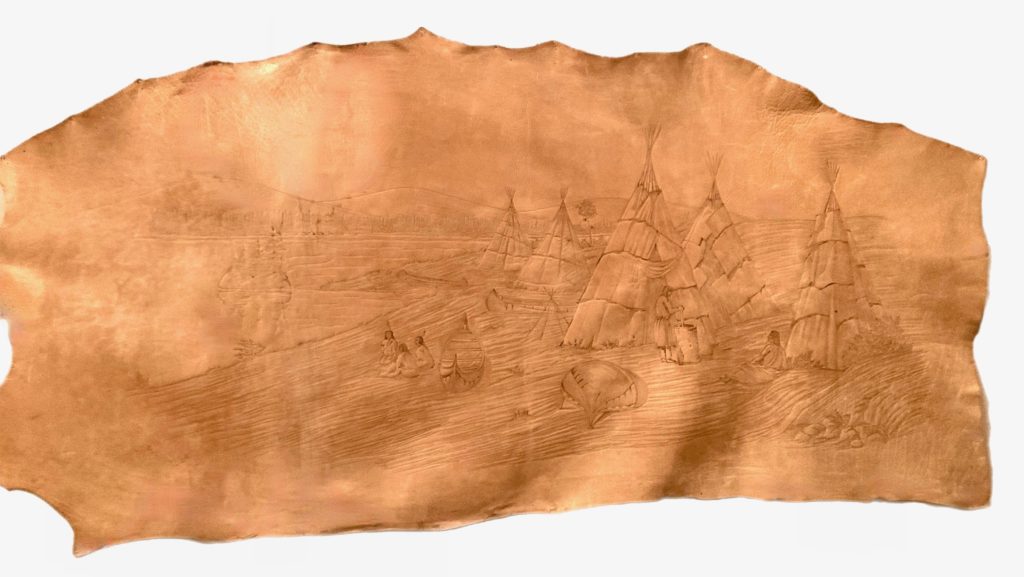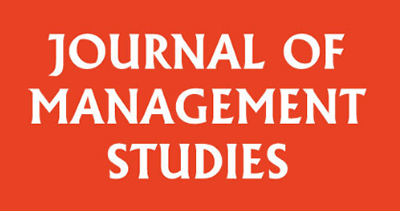
Short Summary
We learn from whether and when First Nations communities of northern Turtle Island (Canada) sign agreements about mining on their traditional territories. We look at how First Nations communities braid elements from their culture and history, which we call grass basket materials, with Western metal frame materials, like laws and property rights, to move towards a common goal of resurgence for their community. Our study, published in the Journal of Management Studies, demonstrates that First Nations communities are each unique and that this matters for outsider organizations. We demonstrate why it is important for organizations who want to work with communities to learn about and respect that communities’ uniqueness, as each community’s access their unique set of grass basket and metal frame resources will influence how the community chooses to pursue a goal and, thus, how they will interact with outsiders.
Blog
For the Huron-Wendat, Turtle Island represents mother earth—a central premise to stories about creation. The story of the name, as told by Elders, goes like this:
During the great flood, Yäa’taenhtsihk, the chief’s daughter, was saved by geese by being caught in midair, and gently placed on the back of the Great Turtle. With the help of other animals who also survived the flood, they worked tirelessly to collect soil deep beneath the water and the world was recreated: the Island of the Great Turtle.
In our paper, we learn from this perspective, from the First Peoples of northern Turtle Island (Canada), about how to expertly connect elements of disparate origin to entrepreneurially pursue benefit for community.
Indigenous Resurgence
Indigenous communities across the world are resurging: reclaiming and reaffirming their cultures and histories and pushing back against the colonial forces that have marginalized them. Many of the communities leading the way towards resurgence are from Turtle Island, the original name for what is now called North America. As Indigenous communities reclaim their cultural resources, rights, and identities, they gain control over how and whether to engage with Western social structures, the colonial forces that have tried to marginalize and erase Indigenous cultures, histories, and connections to land. That Indigenous communities are resurging is good news for all of us: the gifts of embracing and learning from people and communities of many cultures will enrich our world, our businesses, and our communities.
What We Do in Our Paper
One of the many ways Indigenous peoples and communities enrich our world is what we can learn from Indigenous perspectives and ways of doing things. We use a metaphor of grass basket and metal frame materials. Grass basket materials are of Indigenous origin, like stories, traditions, language, and community connections. Metal frame materials are of Western origin, like laws and property rights. We conceptualized how First Nations communities of northern Turtle Island (Canada) braid grass basket materials, like culture and histories, with aspects of the imposed metal frame colonial system to navigate and reshape the social world around them. We call these elements and aspects ‘scaffolding.’ In taking this approach, we braid a concept from Western theory with Indigenous thinking.
We explored the degree to which a community integrates different scaffolding materials is consequential for whether and how the community will engage with outsiders. Outsiders, in this case, are mining companies who are interested in exploring or operating on a First Nation community’s traditional territory in order to extract their resources. We find three different clusters of ways in which communities construct scaffolding using Indigenous and Western materials. Then, using a unique dataset composed of 240 Canadian First Nations communities, we look at whether the different scaffolding material combinations predict the likelihood that a given community will engage in a partnership agreement with an outsider, in this case a non-Indigenous mining company.
What We Find and What it Means
We find that the path that the communities take towards resurgence might have the same end goal of resurging, but communities travel different paths towards resurgence depending on what scaffolding materials are available to them. Some communities are more likely to sign agreements with outsiders: those who have predominately grass basket materials but weave metal frame materials into their baskets are the most likely to do so. Other communities are less likely: communities who have more publicly facing scaffolding materials of both grass basket and metal frame origin seem to be choosing an alternative path to resurgence, as they are less likely to sign agreements with mining companies. Among other things, our study empirically supports that Indigenous communities are each unique and this matters for outsider organizations. In short, community differences should be considered by outsider organizations when they want to engage with a community.
Why this Matters
Our work is important because it highlights a kind of entrepreneurial activity, the construction and use of scaffolding by communities, and a context that is overlooked by mainstream entrepreneurship scholars and management scholars in general. In doing so, we work towards decolonizing and recalibrating entrepreneurship research. One way we have done this is through exploring a decolonized approach to research: we, for example, are an authorship team with one Indigenous person and three descendants of settlers to Turtle Island. We engaged in conversation circles throughout our paper’s development to better understand our social position relative to our study. Further than that, another way we move towards decolonizing management research is using highly contextualized data in less traditionally used, but also less prescriptive, quantitative models.
For organizations and people who work with Indigenous or non-Indigenous communities, our work is an important reminder to work with communities: to learn about and respect their unique cultures and histories. Indeed, it is our hope that our approach expresses a willingness to decolonize management research and provides a steppingstone for further steps along the path towards decolonizing management research and practice.

0 Comments